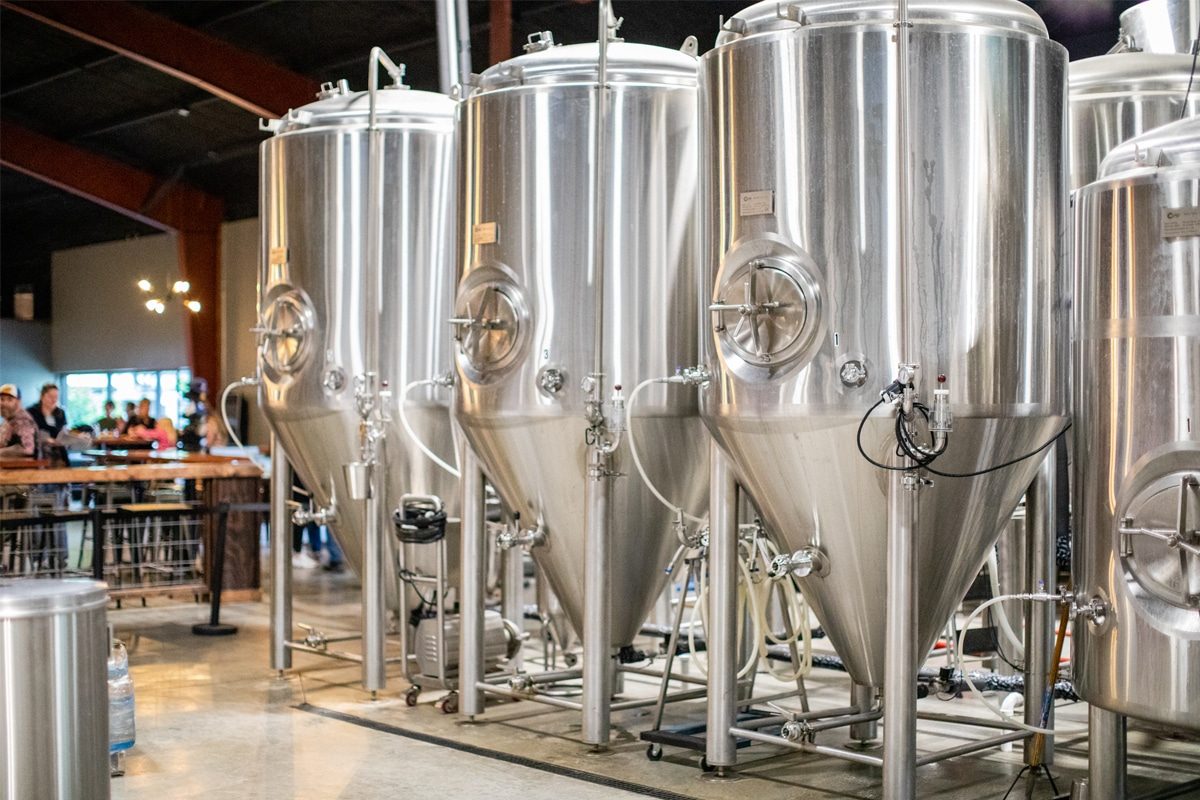
What Is The Difference Between Various Types Of Breweries?
Embarking on the journey of opening a brewery is an exciting venture that combines passion, creativity, and entrepreneurial spirit. For many beer lovers, the dream of brewing their beer and sharing it with the world is what ignites their entrepreneurial spirit. Yet behind the allure of brewing unique flavors and sharing them with eager customers lies a complex journey full of challenges and opportunities. Before embarking on this exciting adventure, you must have the necessary knowledge and foresight to navigate the complexities of brewery ownership.
From mastering the art of brewing to understanding the complexities of business management and regulatory compliance, the path to brewery ownership is paved with countless considerations and decisions. In this comprehensive guide, we’ll dive into the essential factors you need to know before opening a brewery, so you can embark on this exciting journey with confidence and clarity.
Complete Guide
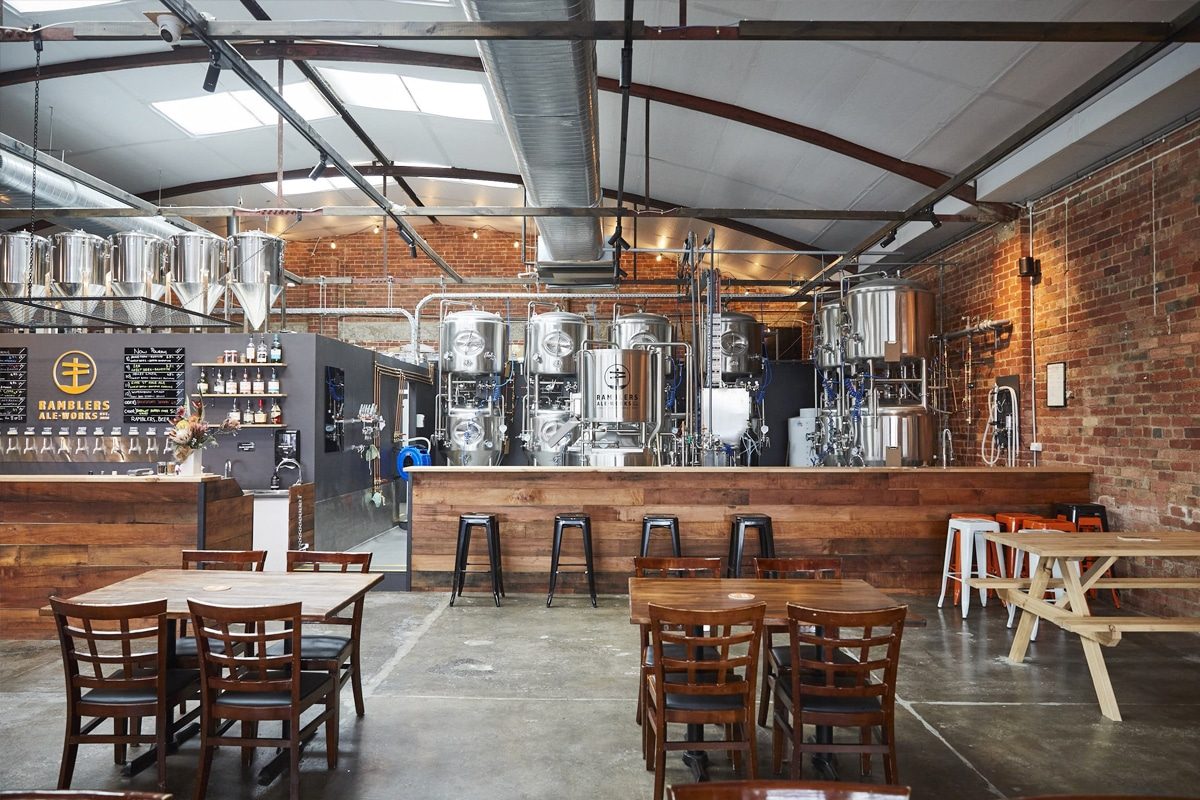
Understanding The Craft Beer Landscape
The popularity of craft beer has skyrocketed significantly over the past few decades, growing from a niche market to a global phenomenon. Before diving into the world of brewery ownership, it’s crucial to fully understand the craft beer landscape.
- Market Overview: The craft beer industry is characterized by a focus on quality, innovation, and flavor diversity. According to statistics from the Brewers Association, in the United States alone, craft breweries account for more than 25% of the beer market, which shows the significant impact of craft beer on the beverage industry.
- Consumer Preferences: Craft beer drinkers are discerning consumers who value authenticity, craftsmanship, and discovery. They look for unique and delicious beers that reflect the creativity and passion of the brewers behind them. Understanding consumer preferences and trends can help shape a successful brewery strategy and develop compelling beer products.
- Emerging Trends: The craft beer landscape is constantly evolving, with new styles, ingredients, and brewing techniques emerging. From hazy IPAs and barrel-aged stouts to sour beers and experimental blends, staying on top of emerging trends can stay ahead of the competition in the competitive craft beer market.
- Regional Differences: Craft beer culture varies by region, influenced by factors such as local ingredients, brewing traditions, and consumer preferences. Whether you’re opening a brewery in a bustling city center or the countryside, understanding the unique characteristics of your target market can help tailor your product and marketing strategies accordingly.
- Competitive Analysis: With the proliferation of craft breweries around the world, competition within the industry is becoming increasingly fierce. Conducting thorough research of existing breweries in your area can help identify market gaps, assess consumer demand, and effectively position your brewery. By understanding the competitive landscape, you can differentiate your brewery and carve out a niche for yourself in the market.
Understanding the craft beer landscape is fundamental for aspiring brewery owners and can provide valuable insights into market dynamics, consumer preferences, and competitiveness. By leveraging this knowledge and embracing innovation and creativity, you can position your brewery for success in the dynamic world of craft beer.
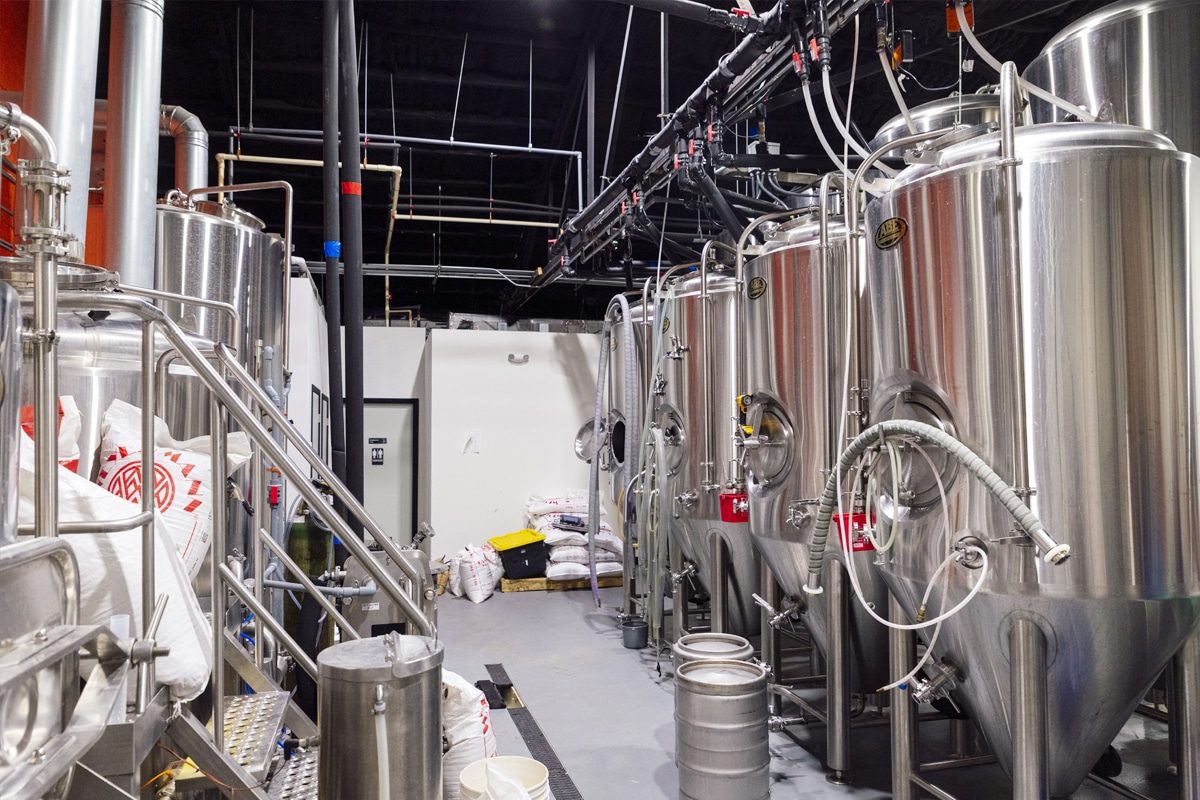
Crafting Business Plan
Launching a brewery is not just about brewing beer, it’s about building a sustainable and successful business from the ground up. A well-crafted business plan serves as the roadmap for your brewery’s journey, guiding strategic decision-making, securing financing, and setting the stage for long-term success. Before opening your brewery, it’s essential to dedicate time and effort to developing a comprehensive business plan that outlines your vision, goals, and strategies for achieving them.
- Defining Vision and Mission: Begin by articulating the overarching vision and mission of your brewery. What sets your brewery apart from the competition? What values do you want the brand to embody? The vision and mission statements should succinctly convey the essence of your brewery’s identity and purpose, serving as guiding principles for all your business activities.
- Assessing Startup Costs: One of the first steps in crafting your business plan is estimating the startup costs required to launch your brewery. This includes expenses such as equipment purchases, facility lease or purchase, licensing and permitting fees, initial ingredient and packaging supplies, marketing and branding costs, and operating expenses for the first few months. Be thorough in your calculations and research to ensure you have a realistic understanding of the financial investment needed.
- Funding Sources: Consider your funding sources. Will you be self-funding the brewery, seeking investment from friends and family, or pursuing financing from banks or investors? Each option has its pros and cons, so weigh them carefully and develop a financing strategy that aligns with your business goals and risk tolerance.
- Developing a Financial Plan: A solid financial plan can demonstrate a brewery’s viability and profitability to potential investors or lenders. This section of your business plan should include detailed financial projections, including income statements, cash flow forecasts, and balance sheets for the first three to five years of operation. Use conservative estimates and realistic assumptions based on market research and industry benchmarks to ensure the accuracy and credibility of your financial projections.
- Drafting a Marketing Strategy: No brewery can succeed without a solid marketing strategy to attract and retain customers. Your marketing plan should outline how you will promote your brewery, build brand awareness, and drive sales. Consider strategies such as social media marketing, website development, events and promotions, collaborations with other businesses or breweries, and community engagement initiatives. Tailor your marketing efforts to your target market and brand identity, and be prepared to adapt your strategy based on feedback and market trends.
- Setting Operational Goals and Milestones: In addition to financial and marketing considerations, your business plan should also outline your operational goals and milestones. This may include production targets, expansion plans, employee hiring and training schedules, quality control measures, and customer service standards. Setting clear and measurable goals will help you track progress, identify areas for improvement, and stay focused on achieving success.
Crafting a comprehensive business plan is an essential step in the journey of opening a brewery. By defining your vision, assessing startup costs, developing a financial plan, drafting a marketing strategy, and setting operational goals, you can lay the foundation for a thriving and sustainable brewery business. Take the time to research, analyze, and refine your business plan, and seek input from industry experts, mentors, and potential stakeholders to ensure its effectiveness and viability. With a well-thought-out plan in place, you’ll be better equipped to navigate the challenges and opportunities of brewery ownership and turn your dream into reality.
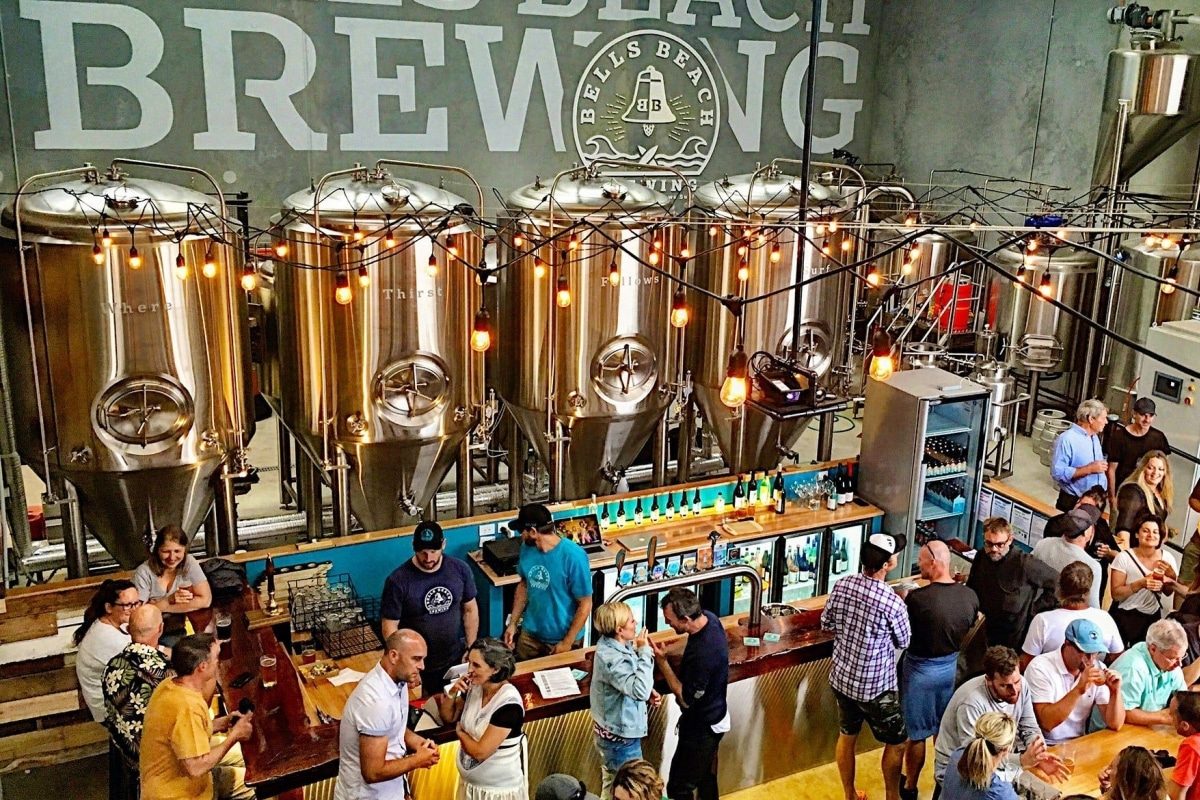
Navigating Regulations and Licensing
Opening a brewery involves navigating a complex web of regulations and licensing requirements at the federal, state, and local levels. From obtaining licenses to adhering to health and safety standards, understanding and adhering to regulatory requirements ensures legal brewery operations. Before embarking on your brewery venture, familiarize yourself with the regulatory landscape and take proactive steps to obtain the necessary licenses and permits.
- Understanding Legal Requirements: The brewing industry is subject to a myriad of laws and regulations governing various aspects of brewery operations, including production, distribution, labeling, taxation, and safety standards. Federal agencies such as the Alcohol and Tobacco Tax and Trade Bureau (TTB) regulate alcohol production and labeling, while state and local authorities oversee licensing, zoning, and health regulations. Familiarize yourself with these regulations early in the planning process to avoid costly delays or compliance issues later on.
- Obtaining Permits and Licenses: Before you can legally operate a brewery, you’ll need to obtain several permits and licenses from government agencies. This may include federal permits for alcohol production and distribution, state licenses for brewery operations, and local permits for zoning, health, and safety compliance. The specific requirements vary depending on your location and the scale of your brewery, so consult with legal experts or regulatory agencies to ensure you have all the necessary paperwork in order.
- Securing Intellectual Property Rights: Protecting your brewery’s intellectual property rights is another important consideration in the regulatory landscape. This may include trademarking your brewery name, logos, and branding elements to prevent infringement by competitors and ensure exclusive use of your brand identity. Additionally, consider patenting any unique brewing processes or recipes to safeguard your intellectual property and maintain a competitive edge in the market.
- Ensuring Compliance with Health and Safety Standards: Maintaining a safe and sanitary brewing environment enables the production of high-quality beer and the health and well-being of customers and employees. Familiarize yourself with relevant health and safety regulations governing food and beverage production, including sanitation practices, equipment maintenance, and waste disposal procedures. Implement robust quality control measures and sanitation protocols to meet or exceed regulatory standards and minimize the risk of contamination or foodborne illness.
- Staying Up to Date with Regulatory Changes: The regulatory landscape for breweries is constantly evolving, with new laws, regulations, and compliance requirements emerging regularly. Stay informed about changes in the regulatory environment by monitoring industry publications, attending regulatory workshops or seminars, and maintaining open communication with regulatory agencies. Proactively adapting to regulatory changes will help you avoid potential fines, penalties, or legal challenges and ensure the continued success of your brewery operation.
Navigating regulations and licensing is a critical aspect of opening a brewery. By understanding legal requirements, obtaining the necessary permits and licenses, securing intellectual property rights, ensuring compliance with health and safety standards, and staying up-to-date with regulatory changes, you can lay the groundwork for a successful and legally compliant brewery business. While navigating the regulatory landscape can be daunting, with careful planning and diligence, you can overcome regulatory hurdles and bring your brewery vision to life.
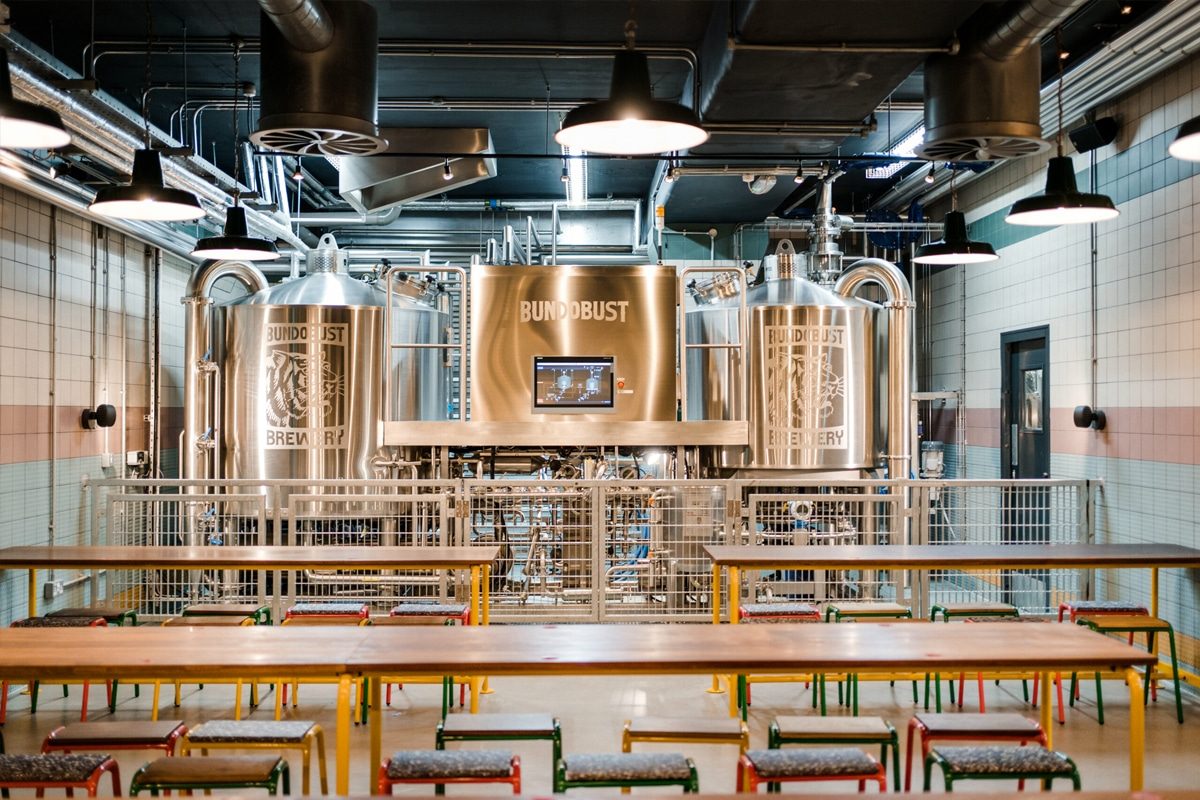
Selecting the Perfect Location
Choosing the right location for your brewery is one of the most critical decisions you’ll make as a brewery owner. The location not only impacts the accessibility and visibility of your brewery but also influences factors such as foot traffic, market reach, zoning regulations, and growth potential. Before settling on a location, consider the following factors to ensure that you find the perfect spot for your brewery:
- Assessing Location Factors: Evaluate various location factors, such as foot traffic, visibility, and accessibility, to determine the optimal location for your brewery. Ideally, you want to be situated in a high-traffic area with good visibility from main roads or thoroughfares to attract passersby and potential customers. Accessibility is also key, so consider factors such as proximity to public transportation, parking availability, and ease of navigation for customers.
- Understanding Market Demand: Research the local market to gauge the demand for craft beer in your chosen area. Consider factors such as population demographics, consumer preferences, and competition from existing breweries or bars. Look for underserved or emerging neighborhoods with a growing population and a strong interest in craft beer to capitalize on untapped market potential.
- Considering Zoning Regulations: Before committing to a location, familiarize yourself with local zoning regulations and land use restrictions that may impact your brewery operations. Ensure that the chosen location is zoned appropriately for commercial or industrial use and complies with any specific requirements for breweries, such as minimum distance requirements from schools or residential areas. Consulting with local planning departments or zoning officials can help you navigate zoning regulations effectively.
- Planning for Growth and Expansion: Anticipate future growth and expansion needs when selecting a location for your brewery. Consider factors such as available space for brewing equipment, storage facilities, and taproom expansion. Choose a location that offers room for growth and scalability, allowing you to expand production capacity and accommodate increased demand as your brewery grows.
- Assessing Infrastructure and Utilities: Evaluate the infrastructure and utility requirements of potential locations to ensure they can support your brewery’s operational needs. Consider factors such as access to water, wastewater disposal, electrical capacity, and ventilation requirements for brewery equipment. Assessing these factors early on can help you avoid costly infrastructure upgrades or operational challenges down the line.
- Understanding Neighborhood Dynamics: Consider the cultural and demographic characteristics of the surrounding neighborhood when selecting a location for your brewery. Look for neighborhoods with a vibrant community atmosphere, a strong sense of local identity, and a supportive business community. Engage with residents and businesses to gauge community sentiment and assess the potential for collaboration and partnerships.
Selecting the perfect location for your brewery requires careful consideration of various factors, including location factors, market demand, zoning regulations, growth potential, infrastructure, and neighborhood dynamics. By conducting thorough research, assessing potential locations against these criteria, and consulting with industry experts and local stakeholders, you can find the ideal location that sets your brewery up for success and establishes a strong foundation for growth and prosperity.
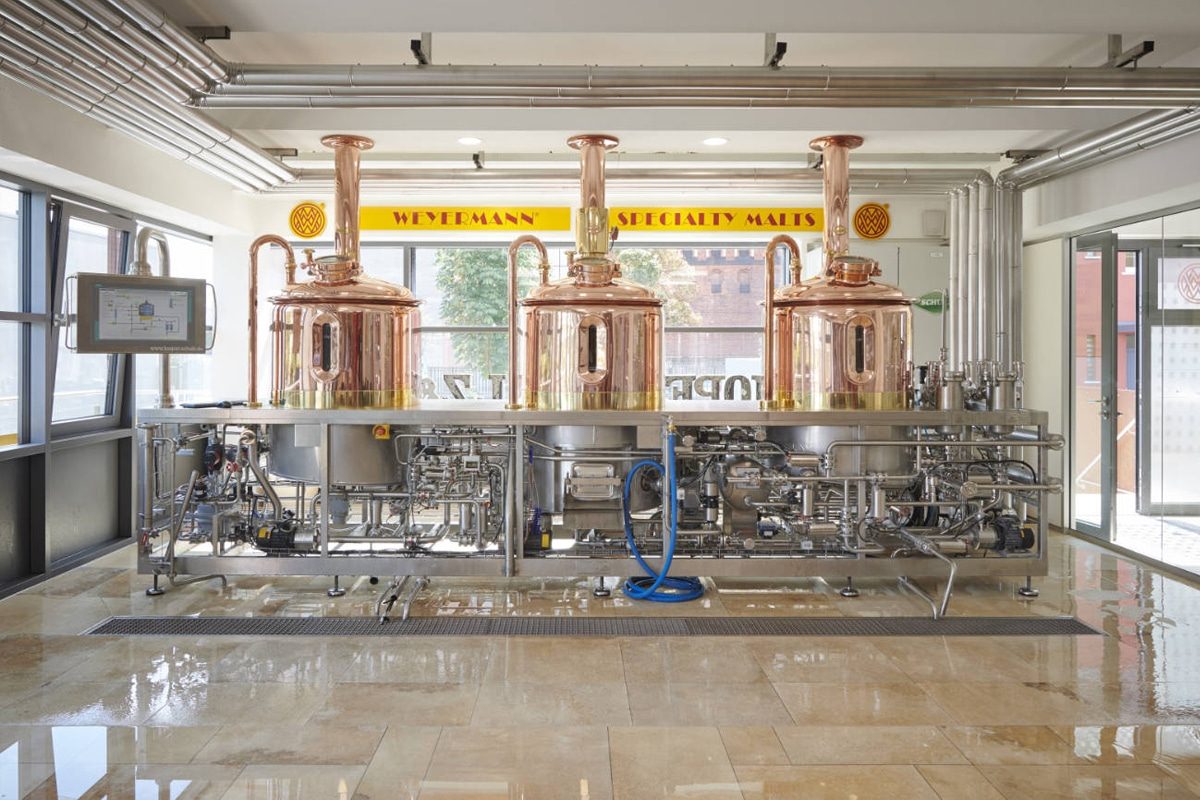
Building Brewery Infrastructure
Establishing a functional and efficient brewery infrastructure contributes to the success of your brewing business. From selecting the right equipment to designing your brewery layout, every aspect of your infrastructure plays a crucial role in ensuring smooth operations, quality production, and regulatory compliance. Before opening your brewery, take the time to carefully plan and invest in the infrastructure needed to support your brewing endeavors.
- Selecting Brewery Equipment: Choosing the right brewery equipment is perhaps the most critical aspect of building your brewery infrastructure. Consider factors such as production capacity, brewing style, and budget when selecting equipment such as brewhouse equipment, fermentation tanks, and bright tanks Whether you opt for a traditional brewhouse setup or invest in cutting-edge brewing technology, prioritize quality and reliability to ensure consistent and high-quality beer production.
- Designing Functional Spaces: Design your brewery layout to optimize workflow, efficiency, and safety for brewing, packaging, storage, and distribution. Consider factors such as space utilization, equipment placement, and workflow ergonomics to minimize bottlenecks and streamline operations. Allocate dedicated areas for brewing, fermentation, conditioning, packaging, and quality control, ensuring clear segregation of tasks and adherence to health and safety standards.
- Ensuring Regulatory Compliance: Adhere to health, safety, and environmental regulations when designing and constructing your brewery facilities. Ensure that your brewery layout complies with building and fire codes, zoning regulations, and sanitation requirements to maintain regulatory compliance and prevent costly fines or shutdowns. Implement proper ventilation, drainage, and waste management systems to mitigate environmental impacts and ensure the health and safety of your employees and the surrounding community.
- Investing in Utilities and Infrastructure: Invest in the necessary utilities and infrastructure to support your brewery’s operations, including water supply, wastewater disposal, electrical systems, and refrigeration. Ensure that your brewery has access to clean, high-quality water for brewing and sanitation purposes, and implement energy-efficient systems to minimize utility costs and environmental impact. Consider installing backup power generators or emergency systems to ensure continuity of operations in the event of power outages or equipment failures.
- Implementing Quality Control Measures: Maintain strict quality control measures throughout your brewery infrastructure to ensure the consistency, cleanliness, and safety of your beer production process. Implement regular cleaning and sanitation protocols for brewery equipment, fermentation tanks, and packaging lines to prevent contamination and spoilage. Invest in quality testing equipment and procedures to monitor key parameters such as pH, temperature, gravity, and microbial activity, ensuring that your beer meets quality standards and regulatory requirements.
- Planning for Expansion and Growth: Anticipate future expansion and scalability needs when building your brewery infrastructure. Design your facilities with flexibility and adaptability in mind, allowing for easy expansion of production capacity, the addition of new equipment, or diversification of product offerings as your brewery grows. Consider factors such as available space, utility infrastructure, and zoning regulations when planning for future expansion, ensuring that your brewery infrastructure can accommodate increased demand and production volumes over time.
Building a brewery infrastructure requires careful planning, investment, and attention to detail. By selecting the right equipment, designing functional spaces, ensuring regulatory compliance, investing in utilities and infrastructure, implementing quality control measures, and planning for future expansion, you can establish a solid foundation for your brewery’s success and longevity. Take the time to assess your brewery’s needs and resources, consult with industry experts, and invest wisely in your infrastructure to set your brewery up for success in the competitive craft beer market.
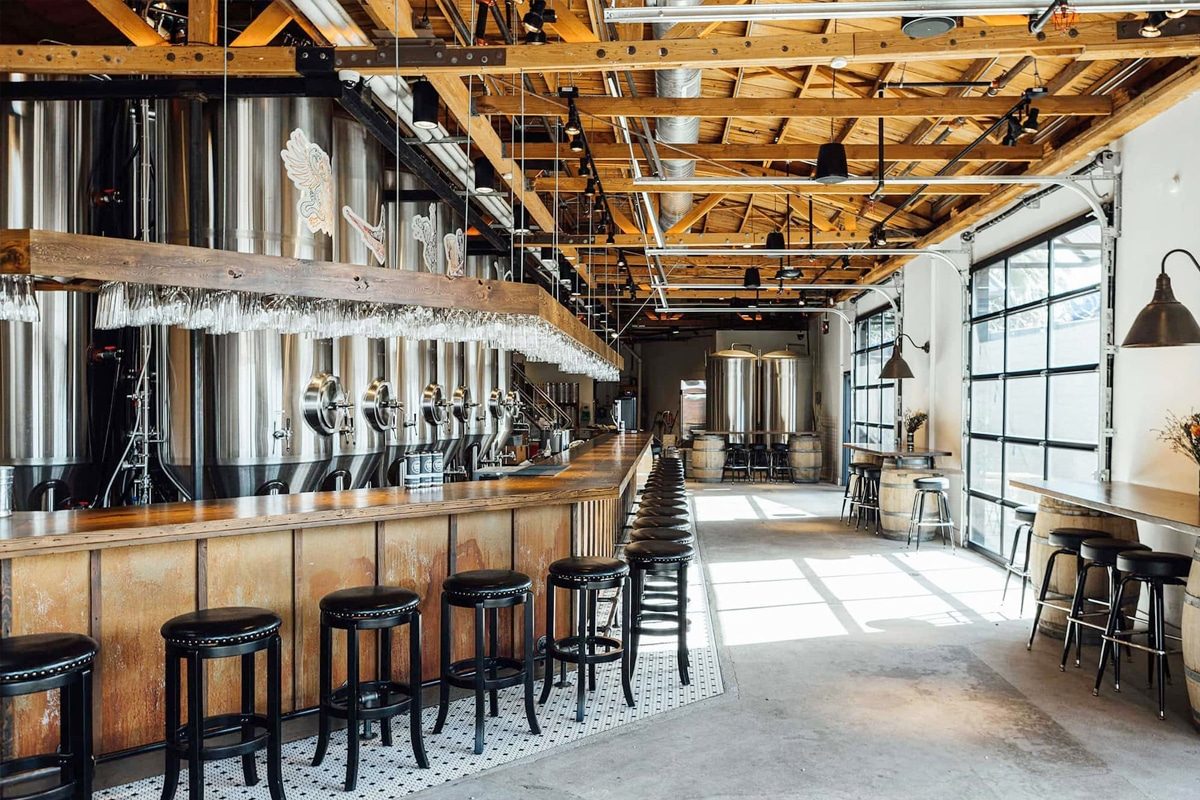
Mastering the Art of Brewing
At the heart of every brewery lies the craft of brewing beer. Whether you’re an experienced homebrewer or new to the brewing world, mastering the art of brewing can result in high-quality, delicious beers that appeal to your customers’ palates. Before opening a brewery, take the time and effort to hone your brewing skills, experiment with different recipes and techniques, and embrace a culture of continuous learning and improvement. Here are some key considerations to help you master the art of brewing:
- Perfecting Your Recipes: Experimentation is key to developing unique and delicious beer recipes that set your brewery apart. Start by mastering classic beer styles such as IPAs, stouts, and lagers, then explore more experimental styles and ingredients to push the boundaries of flavor and creativity. Pay attention to factors such as ingredient selection, brewing techniques, fermentation temperature, and aging processes to achieve the desired flavor profile and consistency in your beers.
- Embracing Quality Control and Assurance: Consistency is crucial in brewing, and implementing robust quality control measures is essential for maintaining the integrity and consistency of your beer production process. Invest in quality testing equipment and procedures to monitor key parameters such as gravity, pH, alcohol content, and microbial activity at every stage of the brewing process. Conduct sensory evaluations and taste tests to ensure that your beers meet your quality standards and exceed customer expectations.
- Understanding Brewing Science and Technology: Develop a deep understanding of the science behind brewing, including the chemical and biological processes that occur during mashing, lautering, boiling, fermentation, and conditioning. Stay abreast of the latest brewing technologies and innovations, such as automated brewing systems, yeast propagation techniques, and temperature control systems, to optimize efficiency, quality, and consistency in your brewery operations.
- Practicing Sanitation and Hygiene: Maintaining a clean and hygienic brewing environment can help produce safe, high-quality beer. Implement rigorous sanitation protocols for brewhouse equipment, fermentation vessels, packaging lines, and storage facilities to prevent contamination and spoilage. Train your brewery staff on proper sanitation procedures and hygiene practices to minimize the risk of microbial contamination and ensure the safety of your beer and customers.
- Continuing Education and Innovation: The brewing industry is constantly evolving, with new trends, techniques, and ingredients emerging regularly. Stay informed about the latest developments in brewing through workshops, seminars, industry publications, and online resources. Network with fellow brewers, join brewing associations and participate in brewing competitions to exchange ideas, share knowledge, and foster a culture of innovation and excellence in your brewery.
- Cultivating a Passion for Brewing: Above all, brewing beer is a labor of love that requires passion, dedication, and a commitment to excellence. Cultivate a passion for brewing in yourself and your brewery team, and instill a culture of pride, craftsmanship, and creativity in everything you do. Embrace the challenges and opportunities of brewing with enthusiasm and curiosity, and let your passion for beer shine through in every pint you brew.
Mastering the art of brewing is a lifelong journey that requires dedication, curiosity, and a willingness to experiment and learn. By perfecting your recipes, embracing quality control and assurance, understanding brewing science and technology, practicing sanitation and hygiene, continuing your education, and cultivating a passion for brewing, you can create exceptional beers that delight your customers and establish your brewery as a beacon of quality and innovation in the craft beer industry. Cheers to mastering the art of brewing and bringing your brewery vision to life!
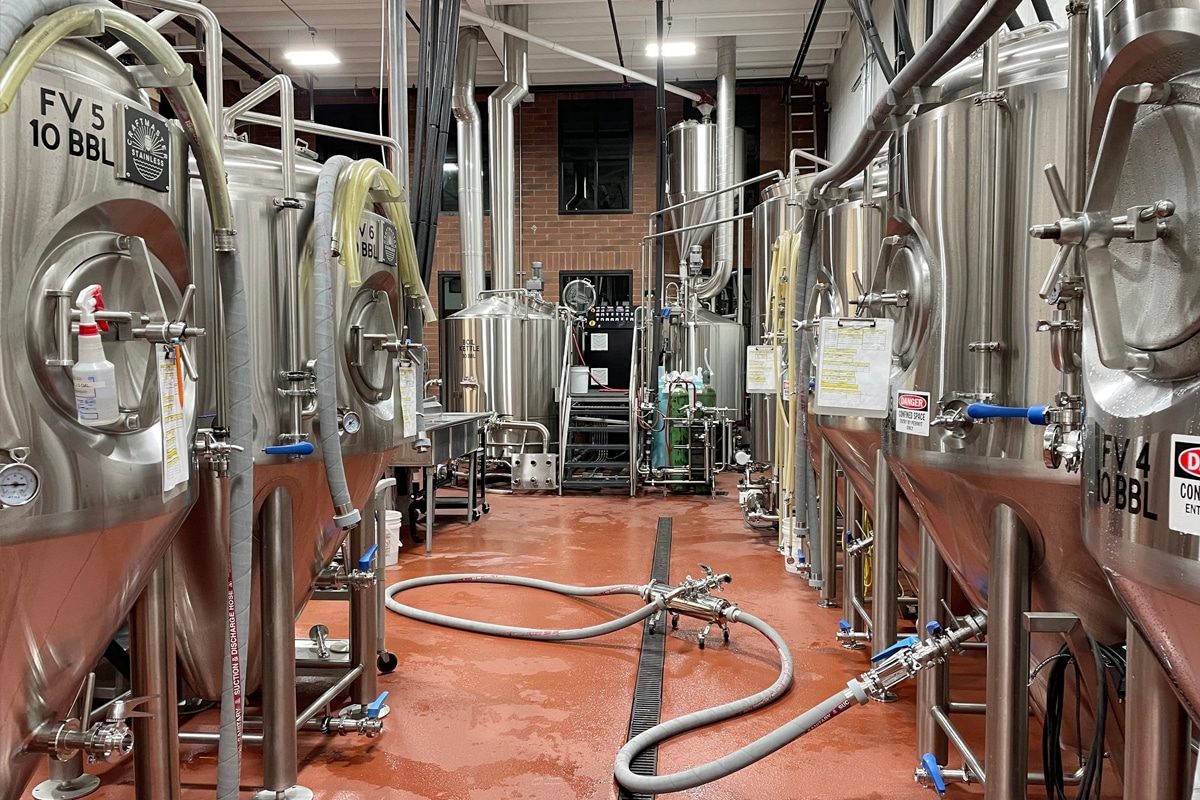
Establishing Distribution Channels
Once you’ve mastered the art of brewing and producing delicious beers, the next step is getting your products into the hands of consumers. Establishing distribution channels can reach a wider audience and maximize your brewery’s sales opportunities. Whether you choose to sell your beer through on-site taprooms, distribution to bars and restaurants, retail sales in stores, or online channels, careful planning and strategic decision-making are key to building a successful distribution network. Here are some key considerations to help you establish distribution channels for your brewery:
- Choosing Distribution Models: There are several distribution models to consider when planning your brewery’s distribution strategy. One option is to focus on direct-to-consumer sales through an on-site taproom, where customers can purchase beer directly from the brewery. Another option is to partner with distributors to distribute your beer to bars, restaurants, and retail outlets. Alternatively, you can explore online sales channels, such as e-commerce platforms or subscription services, to reach customers directly.
- Building Relationships with Distributors: If you choose to work with a distributor, building a strong relationship with them can help achieve your brewery’s success. Research and identify reputable distributors with a track record of success in your target markets. Reach out to distributors to introduce your brewery and products, and negotiate distribution agreements that align with your brewery’s goals and values. Maintain open communication and collaboration with distributors to ensure that your beer is effectively marketed and distributed to retailers and consumers.
- Developing Retail Partnerships: In addition to working with distributors, consider developing partnerships with retail outlets such as liquor stores, grocery stores, and specialty beverage shops to expand your brewery’s reach. Build relationships with retail buyers and decision-makers, and offer incentives such as promotional materials, discounts, and tastings to encourage them to carry your beer. Collaborate with retailers on marketing initiatives and promotions to drive sales and increase visibility for your brand.
- Exploring Alternative Sales Channels: In addition to traditional distribution channels, consider exploring alternative sales channels to reach customers directly. This may include setting up an online store to sell beer directly to consumers, offering subscription services or beer clubs, or participating in farmers’ markets, festivals, and other events to showcase your products and engage with customers face-to-face. By diversifying your sales channels, you can reach a broader audience and adapt to changing consumer preferences and market dynamics.
- Managing Inventory and Logistics: Effective inventory management and logistics help ensure your beer reaches your customers in a timely and efficient manner. Implement inventory tracking systems to monitor stock levels, forecast demand, and manage production schedules effectively. Work closely with distributors and retailers to coordinate product deliveries, optimize route planning, and minimize transportation costs. Invest in packaging materials and branding to ensure that your beer arrives at its destination in pristine condition and makes a positive impression on customers.
- Monitoring Performance and Feedback: Once your distribution channels are up and running, it’s essential to monitor performance and gather feedback from customers, distributors, and retail partners. Track sales metrics such as volume, revenue, and market share to evaluate the effectiveness of your distribution strategy and identify areas for improvement. Solicit feedback from customers and partners on product quality, packaging, pricing, and marketing to refine your offerings and enhance the customer experience.
Establishing distribution channels is a critical aspect of brewery operations that requires careful planning, relationship-building, and execution. By choosing the right distribution models, building strong relationships with distributors and retail partners, exploring alternative sales channels, managing inventory and logistics effectively, and monitoring performance and feedback, you can build a robust distribution network that maximizes the reach and impact of your brewery’s products. Cheers to building successful distribution channels and bringing your beers to beer lovers everywhere!
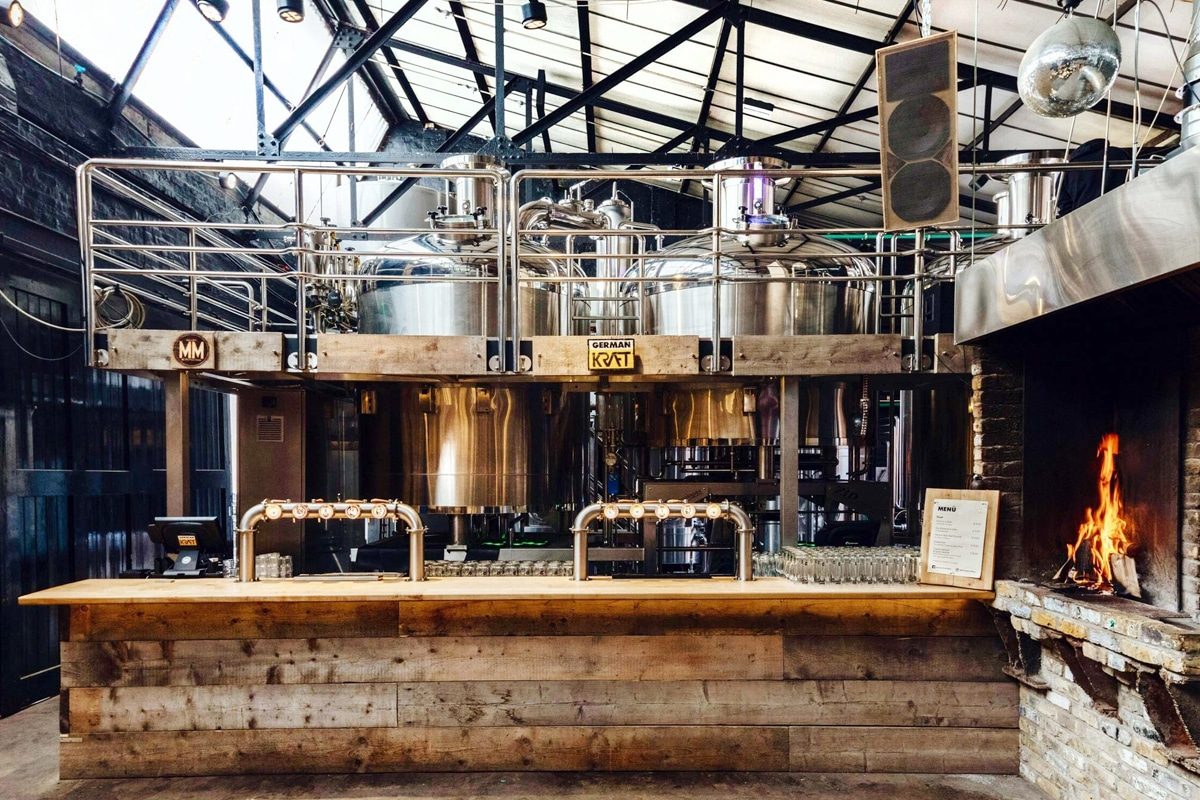
Cultivating Your Brand Identity
In the competitive landscape of the craft beer industry, establishing a strong and unique brand identity can differentiate you, build customer loyalty, and drive a brewery’s long-term success. Your brand identity encompasses everything from your brewery’s name and logo to its values, personality, and visual aesthetics. Before opening your brewery, it’s crucial to dedicate time and effort to cultivating a compelling brand identity that resonates with your target audience and sets your brewery apart from the competition. Here are some key considerations to help you cultivate your brewery’s brand identity:
- Define Your Brand Values and Mission: Start by defining the core values and mission of your brewery. What principles and beliefs guide your brewery’s operations and decision-making? What sets your brewery apart from others in the industry? Articulate your brand’s mission statement and values, and ensure that they are reflected in every aspect of your brewery’s identity, from your brewing philosophy to your customer service ethos.
- Identify Your Target Audience: Understand your target audience and their preferences, tastes, and lifestyles. Who are your ideal customers, and what motivates them to choose craft beer? Conduct market research to identify demographic trends, consumer behaviors, and market segments within your target audience. Tailor your brand messaging, marketing efforts, and product offerings to resonate with the needs and desires of your target audience.
- Develop a Compelling Brand Story: Craft a compelling narrative that tells the story of your brewery’s journey, heritage, and passion for brewing. Share the inspirations behind your beer recipes, the challenges you’ve overcome, and the values that drive your brewery’s mission. Your brand story should be authentic, engaging, and memorable, creating emotional connections with your audience and fostering loyalty and advocacy for your brand.
- Design Visual Brand Assets: Invest in visually appealing brand assets that reflect your brewery’s personality and identity. This includes designing a distinctive logo, packaging labels, merchandise, signage, and marketing materials that capture the essence of your brand. Choose colors, fonts, and imagery that align with your brand’s aesthetic and resonate with your target audience. Consistency is key in visual branding, so ensure that your brand assets are cohesive and recognizable across all touchpoints.
- Establish Brand Voice and Tone: Develop a consistent brand voice and tone that communicates your brewery’s personality and values. Whether your brand voice is playful and irreverent, or serious and sophisticated, ensure that it resonates with your target audience and reflects the unique character of your brewery. Use your brand voice consistently across all communication channels, including social media, advertising, packaging, and customer interactions, to reinforce your brand identity and build brand recognition.
- Engage with Community: Build a strong sense of community around your brewery by engaging with your customers, fans, and local community. Host events, tastings, and brewery tours to connect with customers and foster loyalty. Support local charities, events, and causes that align with your brand values, and actively participate in community initiatives and collaborations. By becoming an integral part of your community, you can strengthen your brand’s reputation and create meaningful relationships with your customers.
Developing a strong brand image helps achieve success in the craft beer industry. By defining your brand values and mission, identifying your target audience, developing a compelling brand story, designing visual brand assets, establishing brand voice and tone, and engaging with your community, you can create a distinctive and memorable brand that resonates with customers and sets your brewery apart in a crowded market. Cheers to cultivating a brand identity that reflects the passion, creativity, and authenticity of your brewery!
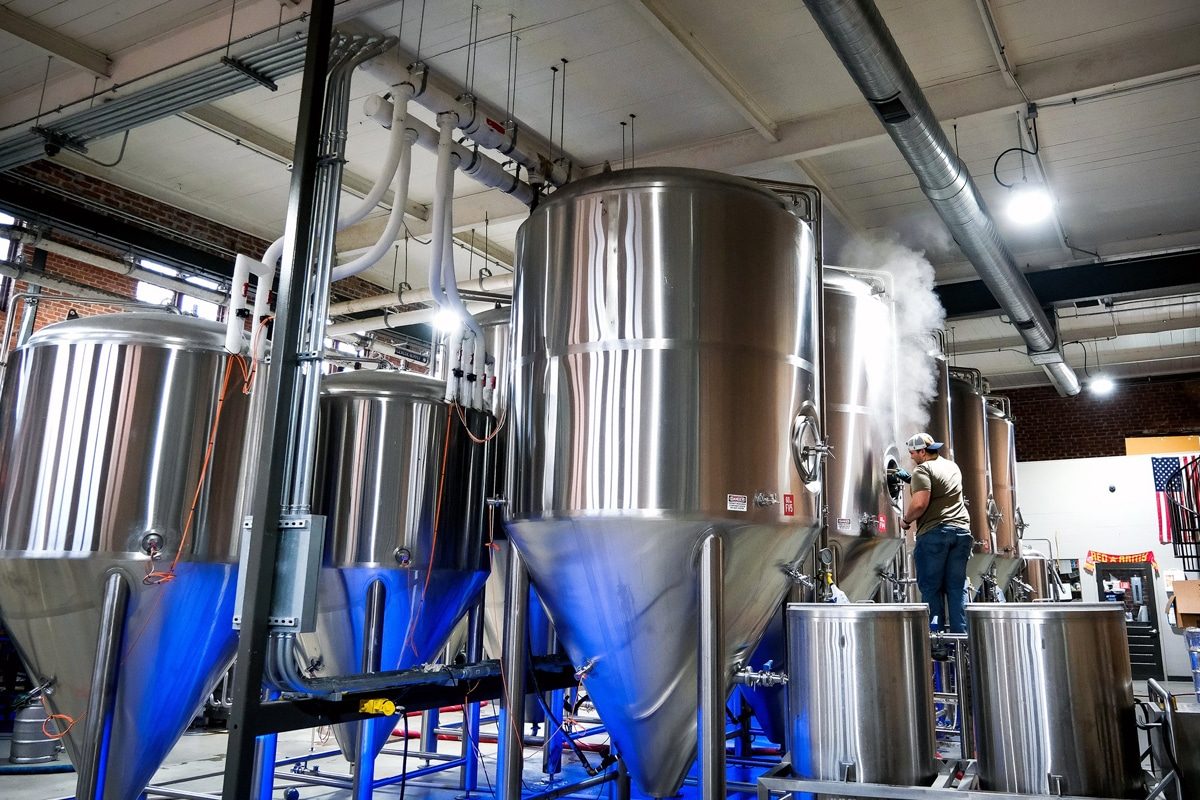
Managing Finances and Operations
Effective financial management and operational efficiency maintain a successful and sustainable brewery. From budgeting and cash flow management to inventory control and staff scheduling, every aspect of brewery operations plays a role in maximizing profitability, minimizing costs, and ensuring smooth day-to-day functioning. Before opening your brewery, it’s essential to establish robust financial and operational systems to support your business goals and drive long-term success. Here are some key considerations to help you manage finances and operations effectively:
- Developing a Comprehensive Business Plan: Start by developing a comprehensive business plan that outlines your brewery’s goals, objectives, and strategies for achieving them. Include detailed financial projections, budgeting plans, and operational strategies to guide your brewery’s growth and development. Your business plan should cover all aspects of brewery operations, including brewing, packaging, distribution, sales, marketing, and staffing, and provide a roadmap for success.
- Budgeting and Financial Forecasting: Create detailed budgets and financial forecasts to track revenue, expenses, and cash flow projections for your brewery. Monitor key financial metrics such as gross profit margin, operating expenses, and break-even analysis to assess the financial health of your brewery and identify areas for improvement. Develop contingency plans and risk management strategies to address potential financial challenges and mitigate risks to your brewery’s profitability.
- Managing Cash Flow: Effective cash flow management ensures your brewery has the liquidity it needs to pay expenses and invest in growth opportunities. Implement cash flow forecasting tools and techniques to monitor incoming revenue and outgoing expenses, and identify potential cash flow gaps or surpluses. Explore financing options such as lines of credit, business loans, or investment capital to support working capital needs and smooth out cash flow fluctuations.
- Controlling Inventory and Costs: Maintain tight control over inventory levels and costs to minimize waste, optimize resource utilization, and maximize profitability. Implement inventory management systems to track raw materials, packaging supplies, and finished goods inventory levels, and optimize purchasing and production processes to minimize carrying costs and stockouts. Monitor cost of goods sold (COGS) and operating expenses closely, and identify opportunities for cost savings through vendor negotiations, process improvements, and waste reduction initiatives.
- Streamlining Operations: Optimize brewery operations to improve efficiency, productivity, and quality throughout the brewing process. Standardize brewing procedures, recipes, and workflows to ensure consistency and repeatability in beer production. Invest in brewing equipment and technology to automate manual tasks, increase production capacity, and reduce labor costs. Implement lean manufacturing principles and continuous improvement initiatives to identify and eliminate bottlenecks, waste, and inefficiencies in brewery operations.
- Staffing and Training: Hire and train qualified staff members who are passionate about brewing and committed to upholding your brewery’s standards of quality and customer service. Develop comprehensive training programs to educate employees on brewing techniques, safety protocols, and customer interaction skills, and empower them to take ownership of their roles and responsibilities. Foster a positive and inclusive work culture that values teamwork, communication, and continuous learning, and recognize and reward employee contributions to brewery success.
- Monitoring and Reporting: Establish systems for monitoring and reporting key performance indicators (KPIs) to track progress toward your brewery’s goals and objectives. Implement regular performance reviews and financial audits to assess operational efficiency, identify areas for improvement, and make data-driven decisions to optimize brewery performance. Utilize brewery management software and analytics tools to generate reports and dashboards that provide insights into brewery operations, financial performance, and market trends.
Effectively managing finances and operations contributes to a successful and sustainable brewery. By developing a comprehensive business plan, budgeting and forecasting accurately, managing cash flow efficiently, controlling inventory and costs, streamlining operations, staffing and training effectively, and monitoring and reporting on key performance indicators, you can build a solid foundation for brewery success and achieve your business goals. With careful planning, strategic decision-making, and continuous improvement efforts, you can navigate the complexities of brewery management and thrive in the competitive craft beer industry. Cheers to managing finances and operations successfully and realizing your brewery’s full potential!
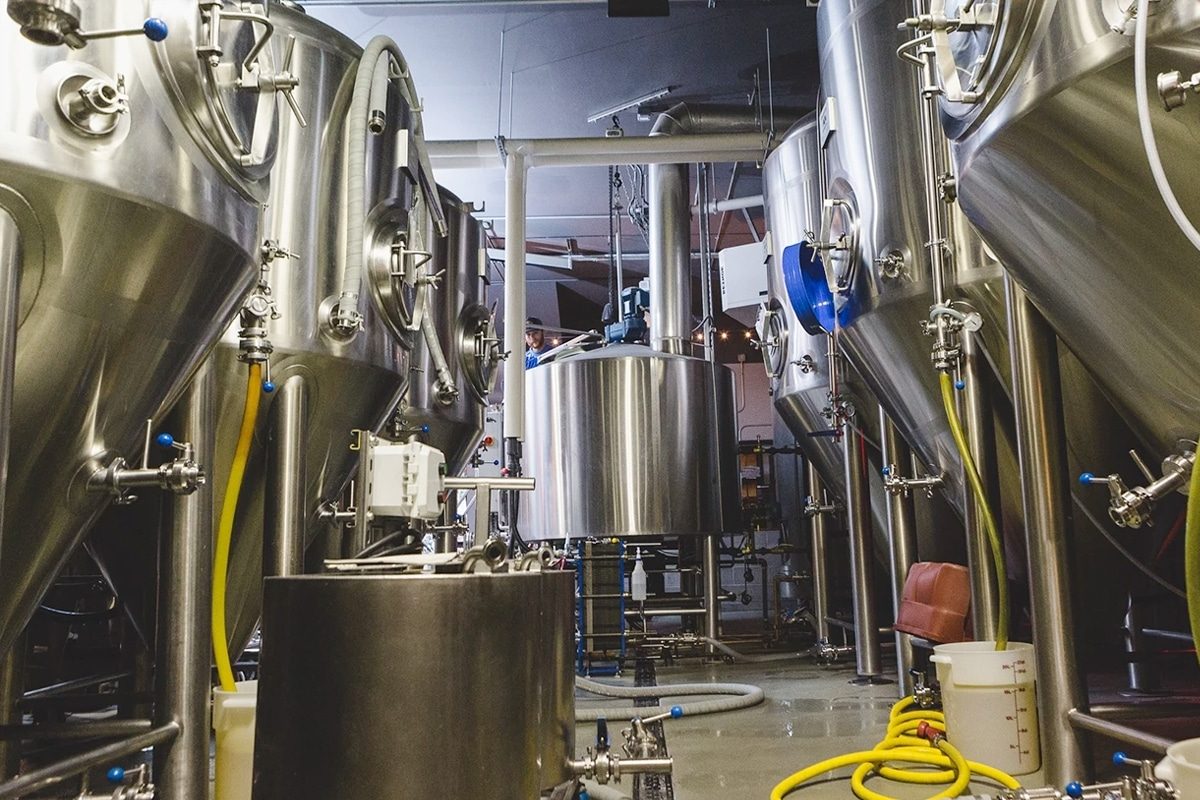
Quality Control
Maintaining consistently high-quality beer can help a brewery succeed and maintain its reputation. Quality control measures ensure that your beers meet or exceed customer expectations, uphold brand integrity, and comply with regulatory standards. From raw material selection to packaging and distribution, every step of the brewing process should be carefully monitored and managed to ensure the highest levels of quality and consistency. Here are some key considerations to help you implement effective quality control measures in your brewery:
- Raw Material Inspection and Testing: Start by inspecting and testing raw materials such as malt, hops, yeast, and water to ensure they meet quality standards and specifications. Source ingredients from reputable suppliers with a track record of quality and consistency, and establish supplier relationships based on trust and reliability. Conduct sensory evaluations, laboratory analyses, and microbiological testing to assess the quality and integrity of raw materials and identify any potential contaminants or defects.
- Recipe Standardization and Documentation: Standardize brewing recipes and procedures to ensure consistency and repeatability in beer production. Document detailed brewing instructions, ingredient specifications, and quality control parameters for each beer recipe, and train brewery staff on recipe adherence and compliance. Use batch tracking and record-keeping systems to monitor recipe variations, track ingredient usage, and maintain accurate brewing records for quality assurance and regulatory compliance purposes.
- Process Control and Monitoring: Implement process control measures to monitor and manage critical parameters throughout the brewing process, from mashing and lautering to fermentation and conditioning. Utilize brewing technology and instrumentation to measure and control factors such as temperature, pH, gravity, pressure, and dissolved oxygen levels in real time. Regularly calibrate and maintain brewing equipment to ensure accuracy and reliability in process control, and respond promptly to deviations or abnormalities to prevent quality issues.
- Fermentation Management and Quality Assurance: Monitor fermentation progress closely to ensure that yeast activity proceeds as intended and fermentation parameters remain within target ranges. Conduct regular gravity readings, temperature checks, and sensory evaluations to assess fermentation health and progress, and intervene as needed to correct any fermentation issues or off-flavors. Implement quality assurance protocols such as yeast viability testing, microbiological analysis, and flavor profiling to ensure the integrity and stability of finished beers.
- Packaging Integrity and Quality Assurance: Maintain strict quality control measures during the packaging process to preserve beer quality and freshness from brewery to consumer. Inspect packaging materials such as cans, bottles, caps, and labels for defects or damage, and ensure they meet quality standards before use. Implement sanitation procedures and quality checks at each stage of the packaging process to minimize contamination risks and ensure product integrity. Conduct package integrity testing, including carbonation levels, oxygen levels, and seal integrity, to verify packaging quality and prevent quality issues such as oxidation or infection.
- Sensory Evaluation and Quality Assessment: Conduct sensory evaluations and quality assessments throughout the brewing process to ensure that beers meet desired flavor, aroma, appearance, and mouthfeel characteristics. Develop sensory evaluation panels comprised of trained tasters or certified beer judges to provide objective feedback and assessment of beer quality. Utilize sensory analysis tools and techniques such as flavor profiling, off-flavor detection, and descriptive analysis to identify flavor defects, assess beer balance, and make informed decisions about recipe adjustments or process improvements.
- Continuous Improvement and Feedback Loop: Establish a culture of continuous improvement and feedback within your brewery to identify opportunities for quality enhancement and innovation. Encourage open communication and collaboration among brewery staff, suppliers, distributors, and customers to share feedback, ideas, and suggestions for improvement. Implement corrective and preventive actions (CAPA) processes to address quality issues, root causes, and recurring problems systematically, and leverage data analytics and performance metrics to drive quality improvement initiatives and optimize brewery operations.
Quality control helps ensure the success and sustainability of your brewery. By implementing robust quality control measures, standardizing brewing processes, monitoring critical parameters, and conducting regular quality assessments, you can maintain consistently high-quality beer that delights customers, builds brand loyalty, and sets your brewery apart in the competitive craft beer market. Cheers to brewing excellence and upholding the highest standards of quality in every pint!
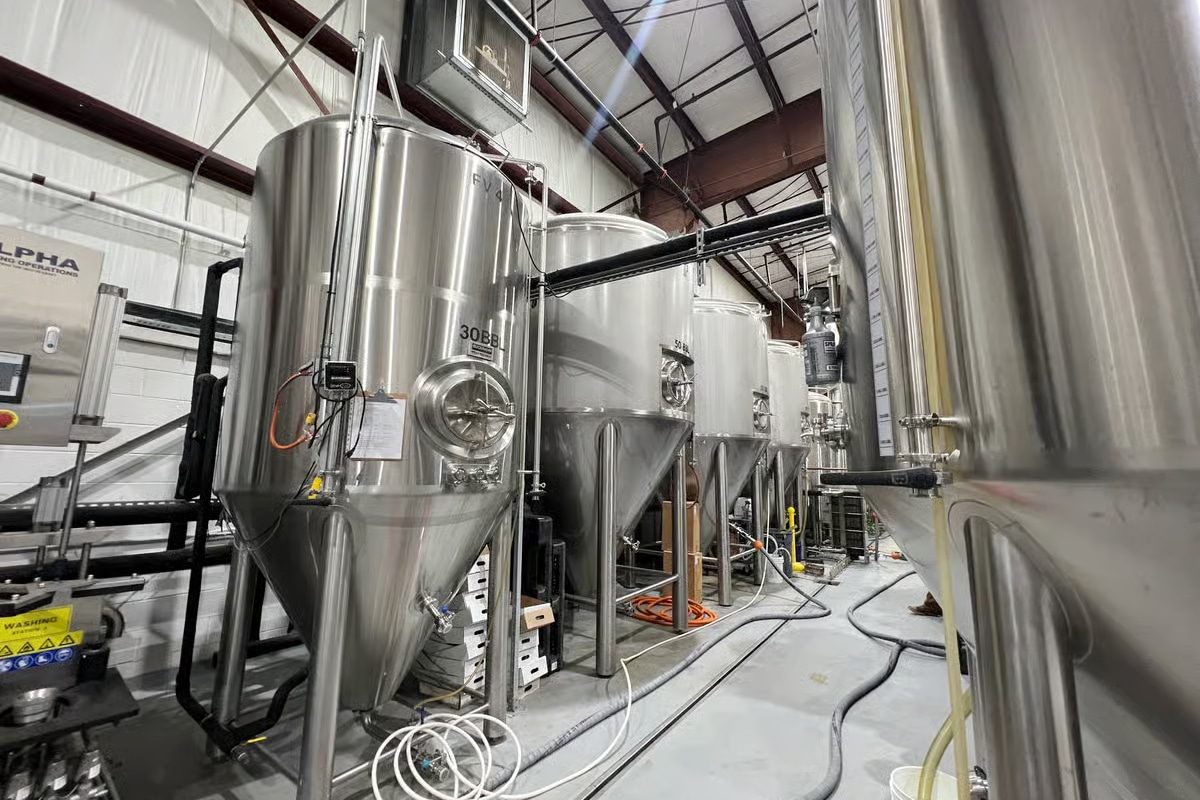
Staffing and Training
Building a skilled and dedicated team can help a brewery achieve success. From brewers and cellar workers to taproom staff and administrative personnel, each member of your team plays a crucial role in delivering high-quality beer and exceptional customer experiences. Before opening your brewery, it’s essential to invest time and resources in recruiting, training, and retaining talented individuals who share your passion for brewing and commitment to excellence. Here are some key considerations to help you staff and train your brewery team effectively:
- Determine Staffing Needs: Start by identifying the staffing needs of your brewery based on the size and scale of your operation, production volume, and projected growth. Determine the roles and positions required, such as head brewer, assistant brewer, cellarman, packaging technician, taproom manager, sales representative, and administrative staff. Consider factors such as skill requirements, experience levels, and staffing ratios to ensure that you have the right team in place to support your brewery’s goals and objectives.
- Recruit and Hire Qualified Candidates: Recruit and hire qualified candidates who are passionate about brewing, knowledgeable about craft beer, and aligned with your brewery’s values and culture. Develop job descriptions and recruitment strategies to attract top talent, and utilize online job boards, industry networks, and social media platforms to advertise job openings. Conduct thorough interviews, reference checks, and skills assessments to assess candidates’ qualifications, experience, and fit with your brewery team.
- Provide Comprehensive Training: Invest in comprehensive training programs to onboard new employees and equip them with the knowledge, skills, and resources needed to excel in their roles. Develop training materials, manuals, and resources that cover brewery operations, safety protocols, quality control procedures, customer service standards, and company policies and procedures. Provide hands-on training and mentorship opportunities to facilitate skill development and foster a culture of continuous learning and improvement.
- Foster a Positive Work Culture: Create a positive and inclusive work culture that values teamwork, communication, and collaboration among brewery staff. Encourage open communication, feedback, and idea-sharing to empower employees to contribute to brewery success and innovation. Recognize and reward employee contributions and achievements through performance incentives, employee recognition programs, and opportunities for career advancement and professional development.
- Promote Safety and Wellness: Prioritize employee safety and wellness in brewery operations by implementing rigorous safety protocols, training programs, and risk management strategies. Conduct regular safety inspections and hazard assessments to identify and mitigate workplace hazards, and provide appropriate personal protective equipment (PPE) and safety training to minimize the risk of accidents and injuries. Promote employee wellness through health and wellness programs, employee assistance resources, and work-life balance initiatives to support the physical and mental well-being of brewery staff.
- Encourage Continuing Education: Encourage and support continuing education and professional development opportunities for brewery staff to expand their knowledge and skills in brewing, hospitality, business management, and related fields. Provide access to industry conferences, workshops, certifications, and training courses to help employees stay abreast of industry trends, best practices, and emerging technologies. Invest in ongoing training and skill development to empower employees to grow and advance their careers within the brewery industry.
- Build a Strong Team Culture: Build a strong sense of camaraderie and teamwork among brewery staff through team-building activities, social events, and community engagement initiatives. Foster a collaborative and supportive work environment where employees feel valued, respected, and motivated to contribute their best efforts toward brewery success. Celebrate achievements, milestones, and successes as a team, and cultivate a shared sense of pride and ownership in the brewery’s accomplishments and reputation.
Staffing and training are crucial aspects of brewery operations that require careful planning, investment, and attention to detail. By recruiting and hiring qualified candidates, providing comprehensive training, fostering a positive work culture, promoting safety and wellness, encouraging continuing education, and building a strong team culture, you can attract and retain top talent, maximize employee performance, and drive success for your brewery.
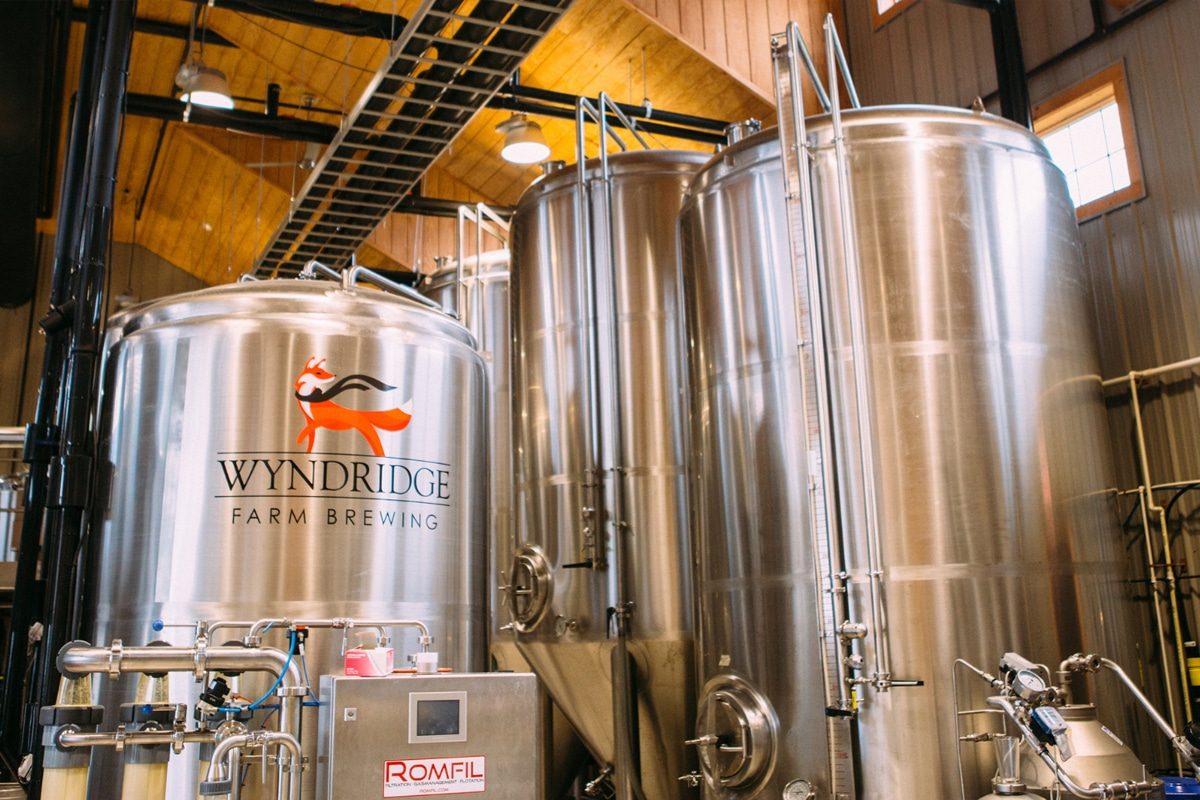
Adaptability and Innovation
In the dynamic and ever-evolving landscape of the craft beer industry, adaptability and innovation contribute to brewery success and sustainability. From responding to changing consumer preferences and market trends to responding to industry challenges and technological advancements, the ability to adapt and innovate can help breweries stay competitive and thrive in a rapidly changing environment. Before opening your brewery, it’s essential to embrace a culture of adaptability and innovation and incorporate these principles into every aspect of your brewery’s operations. Here are some key considerations to help you foster adaptability and innovation in your brewery:
- Stay Agile and Flexible: The craft beer industry is characterized by rapid changes in consumer preferences, market dynamics, and regulatory requirements. Stay agile and flexible in your brewery operations by anticipating and adapting to changes quickly and effectively. Be open to adjusting your brewing recipes, product offerings, marketing strategies, and business models in response to evolving market conditions, customer feedback, and industry trends. Embrace a mindset of continuous improvement and adaptability to remain competitive and resilient in the face of uncertainty.
- Monitor Market Trends and Consumer Insights: Stay informed about market trends, consumer preferences, and emerging opportunities in the craft beer industry by monitoring industry publications, market research reports, and consumer surveys. Keep a pulse on changing consumer tastes, flavor trends, packaging innovations, and purchasing behaviors to identify new market opportunities and stay ahead of the competition. Leverage consumer insights and feedback to inform product development, branding decisions, and marketing strategies that resonate with your target audience.
- Experiment with New Flavors and Styles: Embrace a spirit of experimentation and innovation in your brewing endeavors by exploring new flavors, ingredients, and brewing techniques. Experiment with unique and unconventional ingredients, flavor combinations, and beer styles to create innovative and distinctive beers that capture the imagination of craft beer enthusiasts. Encourage creativity and collaboration among your brewing team, and foster a culture of experimentation and exploration to push the boundaries of traditional brewing and unlock new possibilities for flavor discovery.
- Embrace Technology and Automation: Harness the power of technology and automation to optimize brewery operations, improve efficiency, and enhance quality control. Invest in brewing equipment, software systems, and data analytics tools that streamline brewing processes, monitor critical parameters, and provide real-time insights into brewery performance. Leverage automation technologies such as automated brewing systems, temperature control systems, and inventory management software to increase production capacity, reduce labor costs, and maintain consistency in beer quality.
- Engage with Your Community and Customers: Build strong relationships with your brewery’s community of customers, fans, and stakeholders by engaging with them regularly and soliciting their input and feedback. Create opportunities for customer interaction, such as brewery tours, tastings, and events, to foster a sense of community and loyalty around your brand. Listen to customer feedback, reviews, and suggestions for improvement, and use this insight to refine your products, enhance the customer experience, and strengthen brand loyalty.
- Foster a Culture of Creativity and Collaboration: Encourage creativity and collaboration among brewery staff, suppliers, and industry partners to foster innovation and drive growth. Create a supportive and inclusive work environment where employees feel empowered to share ideas, experiment with new concepts, and contribute to brewery innovation. Collaborate with other breweries, local businesses, and industry organizations on collaborative brews, events, and initiatives that showcase your creativity and expertise and foster a spirit of camaraderie within the craft beer community.
- Adapt to Changing Business Models and Distribution Channels: As the craft beer landscape evolves, be prepared to adapt to changing business models and distribution channels to meet the evolving needs of consumers and market demands. Explore alternative sales channels such as online retail, direct-to-consumer sales, and subscription services to reach new customers and expand your brewery’s reach beyond traditional distribution channels. Embrace emerging trends such as taproom-only releases, beer festivals, and brewery collaborations to engage with consumers and differentiate your brand in a crowded market.
Adaptability and innovation are essential for success in the craft beer industry. By staying agile and flexible, monitoring market trends and consumer insights, experimenting with new flavors and styles, embracing technology and automation, engaging with your community and customers, fostering a culture of creativity and collaboration, and adapting to changing business models and distribution channels, you can position your brewery for long-term success and growth in a competitive and dynamic industry.
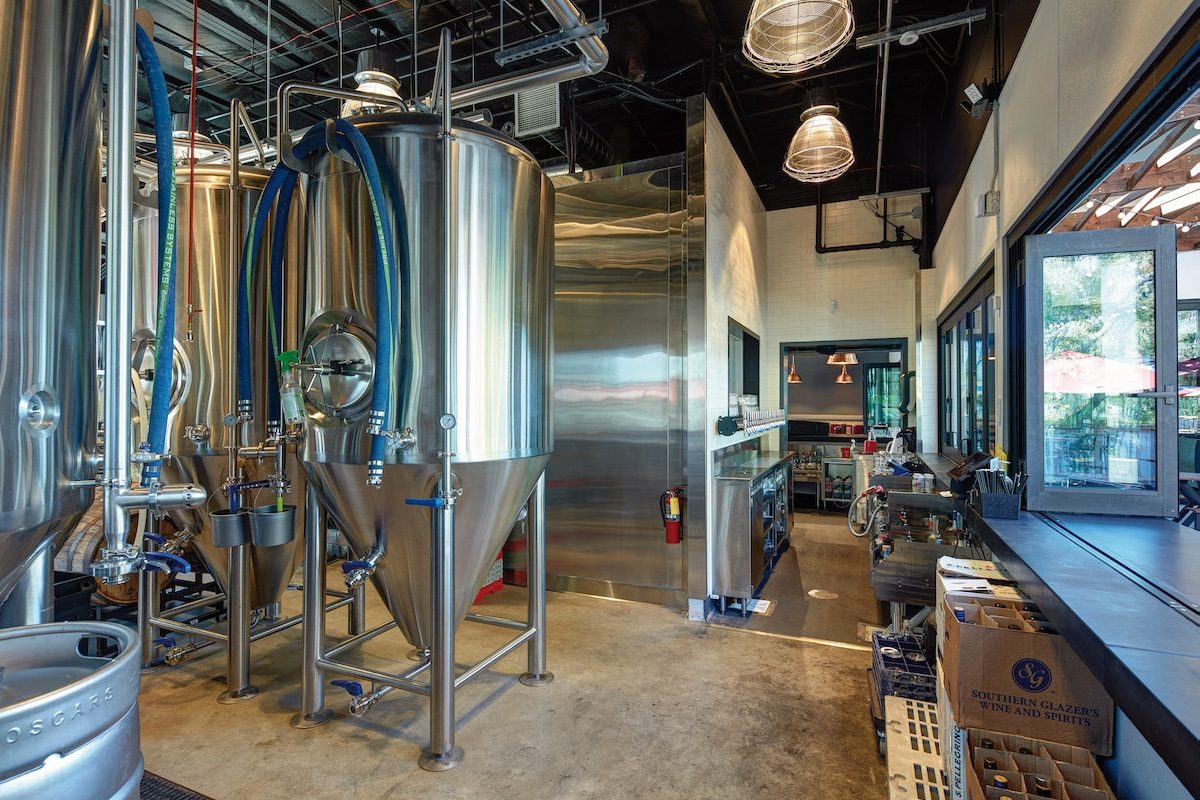
Engaging with the Community
Building strong connections with the local community can help a brewery achieve success and sustainability. Engaging with the community not only fosters a sense of belonging and loyalty but also provides opportunities for collaboration, support, and growth. Before opening your brewery, it’s essential to develop a community engagement strategy that emphasizes meaningful interactions, collaboration, and giving back to the community. Here are some key considerations to help you effectively engage with your community:
- Establish a Presence in the Community: Become an active and visible member of your local community by participating in community events, festivals, and gatherings. Set up booths or sponsorships at local farmers’ markets, craft fairs, and beer festivals to showcase your brewery’s products and connect with potential customers. Host brewery tours, tastings, and open house events to invite community members to experience your brewery firsthand and learn about your brewing process and philosophy.
- Support Local Causes and Organizations: Demonstrate your commitment to the community by supporting local charities, nonprofits, and community organizations through donations, sponsorships, and fundraising events. Identify causes and initiatives that align with your brewery’s values and mission, such as environmental conservation, social justice, or arts and culture, and explore ways to contribute your time, resources, and expertise to support their efforts. Collaborate with local businesses and organizations on joint fundraising events, volunteer activities, and community outreach initiatives to make a positive impact in your community.
- Collaborate with Local Businesses: Forge partnerships and collaborations with local businesses, artisans, and producers to create unique and memorable experiences for your customers and community members. Partner with local restaurants, food trucks, and caterers to offer food and beer pairings, tasting menus, or special events that showcase the best of local cuisine and craft beer. Collaborate with local artists, musicians, and performers to host art shows, live music performances, and cultural events at your brewery, creating opportunities for community engagement and cultural exchange.
- Promote Sustainability and Environmental Stewardship: Demonstrate your commitment to sustainability and environmental stewardship by implementing eco-friendly practices and initiatives in your brewery operations. Reduce waste, conserve resources, and minimize environmental impact through initiatives such as recycling, composting, energy efficiency, and water conservation measures. Educate your customers and community members about sustainability issues and the importance of supporting businesses that prioritize environmental responsibility. Partner with local environmental organizations and participate in community clean-up efforts, tree-planting projects, and conservation initiatives to protect and preserve the natural beauty of your community.
- Foster a Welcoming and Inclusive Environment: Create a welcoming and inclusive environment at your brewery where community members of all backgrounds, ages, and interests feel comfortable and respected. Train your staff on diversity, equity, and inclusion principles and ensure that they treat all customers with kindness, respect, and hospitality. Host inclusive events and activities that celebrate diversity and promote social inclusion, such as LGBTQ+ pride events, cultural festivals, and community fundraisers. Take proactive steps to address any instances of discrimination or harassment and create a safe and supportive space for everyone to enjoy craft beer and community camaraderie.
- Listen to Feedback and Suggestions: Listen to feedback and suggestions from your customers, neighbors, and community members to understand their needs, preferences, and concerns. Solicit feedback through surveys, comment cards, social media channels, and in-person interactions, and use this insight to improve your brewery’s products, services, and customer experiences. Actively engage with community members on social media platforms and respond promptly to questions, comments, and inquiries to demonstrate your commitment to customer satisfaction and community engagement.
Engaging with the community can help build a successful and sustainable brewery that is deeply rooted in the local environment. By establishing a presence in the community, supporting local causes and organizations, collaborating with local businesses, promoting sustainability and environmental stewardship, fostering a welcoming and inclusive environment, and listening to feedback and suggestions from community members, you can create meaningful connections, build brand loyalty, and make a positive impact in your community.
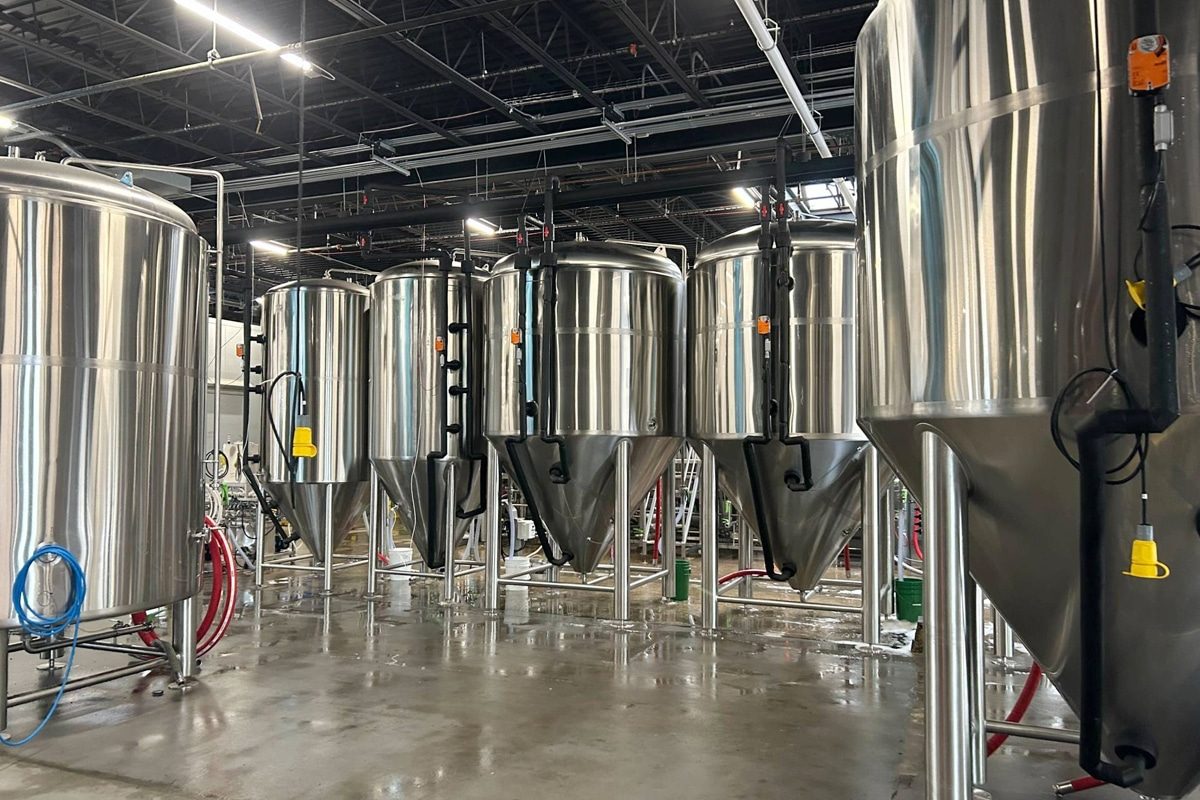
Summarize
Before embarking on the journey of opening a brewery, it’s essential to understand the multifaceted nature of the craft beer industry and the myriad factors that contribute to brewery success. From mastering the art of brewing and navigating regulations to crafting a compelling brand identity and engaging with the community, there are numerous considerations to take into account.
Establishing a solid business plan, including thorough financial planning and operational strategies, is fundamental. Quality control measures ensure consistency and excellence in your beer, while adaptability and innovation allow you to stay ahead of the curve in a rapidly evolving industry. Building a skilled and dedicated team, fostering a culture of creativity and collaboration, and engaging with the local community are also critical components of brewery success.
By carefully considering these aspects and taking proactive steps to address them, aspiring brewery owners can lay a strong foundation for a thriving and sustainable brewery that delights customers, enriches communities, and contributes to the vibrant landscape of craft beer.
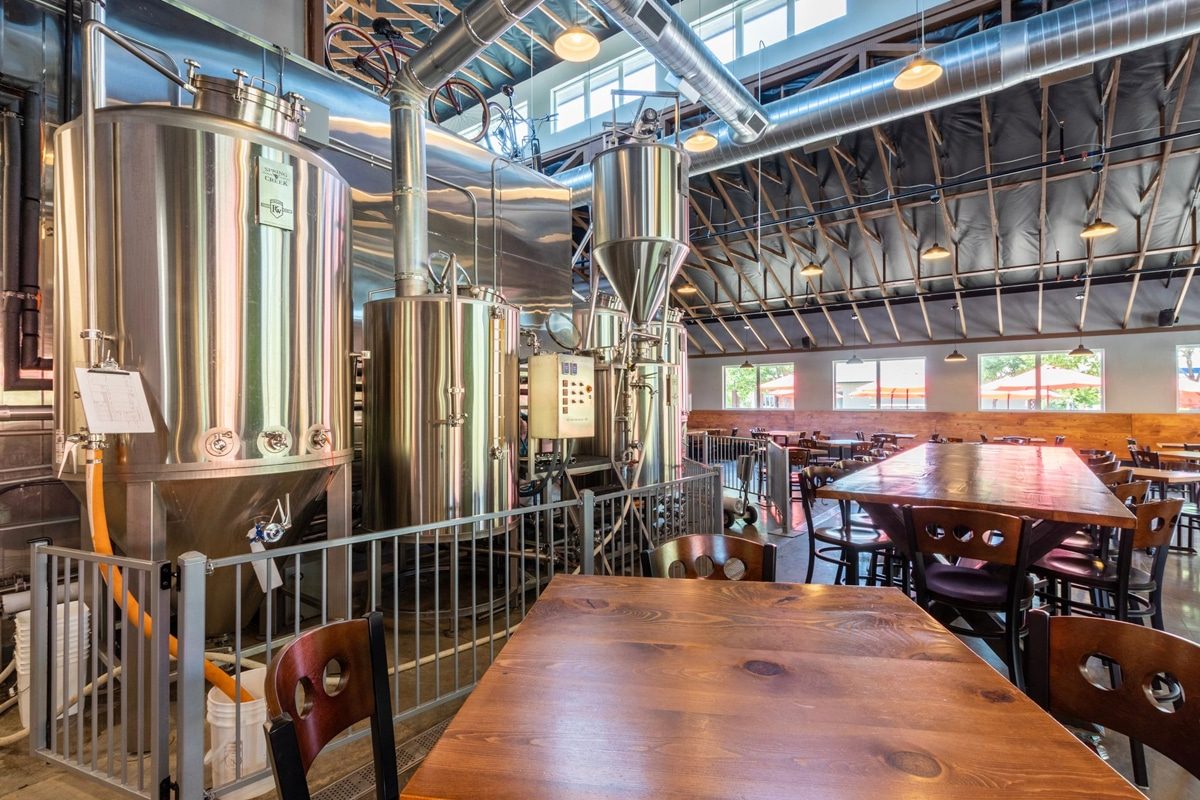
Get A Turnkey Brewery Solutions
When considering all the aspects of opening a brewery, one of the most crucial decisions is selecting the right equipment and infrastructure to support your brewing operations. This is where turnkey brewery solutions come into play.
ZYB Craft, as a professional brewery solution provider, offers comprehensive turnkey solutions tailored to meet the unique needs and requirements of aspiring brewery owners. With turnkey solutions, you can streamline the process of setting up your brewery by leveraging ZYB Craft’s expertise, experience, and industry knowledge. From designing and engineering your brewery layout to sourcing and installing brewery equipment, ZYB Craft handles every aspect of brewery setup, ensuring efficiency, quality, and reliability.
By opting for turnkey brewery solutions, aspiring brewery owners can save time, mitigate risks, and ensure a seamless transition from concept to operation. With ZYB Craft’s turnkey solutions, you can focus on what you do best, brewing exceptional beer while leaving the technicalities of brewery setup in capable hands.



